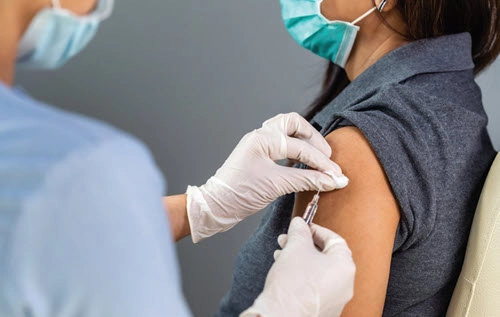Billions allotted to boost the public healthcare workforce.
Medicare practices aren’t the main focus of the latest round of COVID relief, but there is still plenty of funding going toward bolstering struggling providers dealing with the fiscal woes brought on by the pandemic.
Context: In March, President Biden signed the $1.9 trillion COVID-19 relief bill known as the American Rescue Plan Act (ARPA) into law. The legislation aims to turnaround the economic impact of COVID, and includes the much-anticipated $1,400 stimulus checks to qualifying Americans and $300 weekly in jobless benefits through September.
“The ARPA extends and expands some of the critical provisions in the CARES Act and the Consolidated Appropriations Act (CAA),” say Lisa Riccardi and Dan Kraft with VonLehman & Co. in online analysis. “It also includes some new provisions that should come as welcome news to many families and businesses,” Riccardi and Kraft note.

Know These ARPA Hits and Misses
The healthcare-related provisions cover a wide swath of hot spots with much-needed funding earmarked for COVID-19 tracing, testing, research, and vaccination; mental health; public and global health; substance abuse; and children’s health and nutrition. Even though legislation does offer a plethora of assistance specifically and adjacently to Medicare providers, it isn’t all rosy.
One area of concern for providers was the absence of Medicare accelerated payments guidance. ARPA “fails to provide loan forgiveness for Medicare accelerated payments for hospitals,” laments the American Hospital Association (AHA) in a release on the legislation.
Positive: On the upside, one element that did make it into the bill was $8.5 billion allocated “for purposes of making payments to eligible healthcare providers for healthcare related expenses and lost revenues that are attributable to COVID–19” in rural areas, the legislation specifies.
The funds will go to providers “who are enrolled in Medicare or Medicaid and provide diagnosis, testing or care for individuals who may or do have COVID-19, including home health, hospice and long term services and supports providers as well as nursing homes,” notes trade group LeadingAge in a release.
“Eligible rural providers will need to submit an application for the new Provider Relief Fund provision, including documentation of actual healthcare-related expenses and lost revenues attributable to the COVID-19 pandemic,” notes law firm McGuireWoods in online legal analysis.

Register 5 COVID Relief Takeaways
Here’s a brief overview of five items in the law that impact providers:
1. Medicare wage-index update: The legislation reinstates the Medicare wage-index floor for hospitals in all-urban states, starting on Oct. 1, 2021. The law “directs the HHS Secretary to create a Medicare area wage index for hospitals in all-urban states to address a 2019 rule that imposed across-the-board cuts to increase pay for low-wage hospitals,” clarifies law firm Holland & Knight in online analysis.
2. PHE ambulances: The law allows the HHS Secretary to temporarily waive certain Medicare restrictions associated with ambulance services during the public health emergency (PHE). As part of the temporary relief, “Medicare will still reimburse these operators if they delivered patients to non-covered treatment locations due to state or local government directives,” McGuireWoods explains.
3. OIG: In an effort to boost oversight in 2021, the legislation provides the HHS Office of Inspector General (OIG) $5 million to investigate funding given to the Department of Health and Human Services (HHS) to address COVID-19 issues.
4. Public health workforce: The law allocates more than $9 billion to boost the public health workforce across a spectrum of programs, including:
Bonus: Under the legislation, another $7.6 billion is directed “to health centers, federally qualified health centers and the Papa Ola Lokahi (which seeks to improve the health status and wellbeing of Native Hawaiians and their families)” for COVID-19-related activities, McGuireWoods indicates.
5. Mental health: After years of cuts to community mental health and substance abuse disorder programs, ARPA offers substantial funding to address concerns, raise awareness, and assist communities. Some of the highlights related specifically to providers include:
Since this latest iteration of COVID-19 relief falls under Congress’ budget for the fiscal year (FY) 2021, experts suggest providers shouldn’t expect another trillion-dollar haul any time soon.
“With vaccination rates climbing, the ARPA may be the last of the major legislative relief packages addressing the effects of the pandemic,” Riccardi and Kraft surmise.
Resource: Review the law at www.congress.gov/117/bills/hr1319/BILLS-117hr1319enr.pdf.
